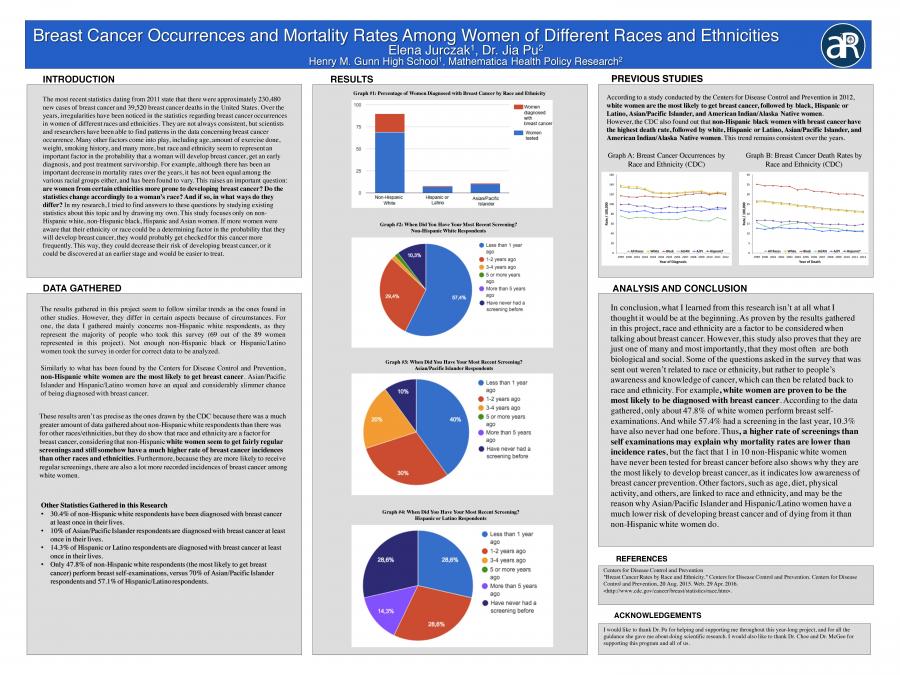Breast Cancer Occurrences and Mortality Rates Among Women of Different Races and Ethnicities by Elena J.
Presentation
Summary
The most recent statistics state that there were approximately 230,480 new cases of breast cancer and 39,520 breast cancer deaths in the United States in 2011. Over the years, irregularities have been noticed in the statistics regarding breast cancer occurrences in women of different races and ethnicities. Many other factors come into play, including age, amount of exercise done, weight, smoking history, and many more, but race and ethnicity seem to represent an important factor in the probability that a woman will develop breast cancer and whether or not she will be able to fight it off. They are not always consistent, but scientists and researchers have been able to find patterns in the data concerning breast cancer occurrence. Although there has been an important decrease in mortality rates over the years, it has not been equal among the various racial/ethnic groups either, and has been found to vary. This raises an important question: are women from certain races/ethnicities more prone to developing breast cancer? Do the statistics change accordingly to a woman’s race/ethnicity? And if so, in what ways do they differ? In my research, I will try to find answers to these questions by studying existing statistics about this topic and by collecting new data. In order to be consistent, this study will focus only on non-Hispanic white, non-Hispanic black, Hispanic and Asian women...Many studies and projects have already been done on this subject, so the first step in my research would be to try to find as much already existing information about ethnicity and race as a factor in breast cancer as possible. Some potential data sources could be the school's library and databases. For example, Ebsco includes many academic journals and newspaper articles on a broad domain of medicine topics. Another source would be medical databases, such as the CDC (Centers for Disease Control and Prevention) database, the ACOG (American Congress of Obstetricians and Gynecologists) database, the World Health Organization database, and the US National Library of Medicine (PubMed.gov) website, which all include many data and statistics as public information....

